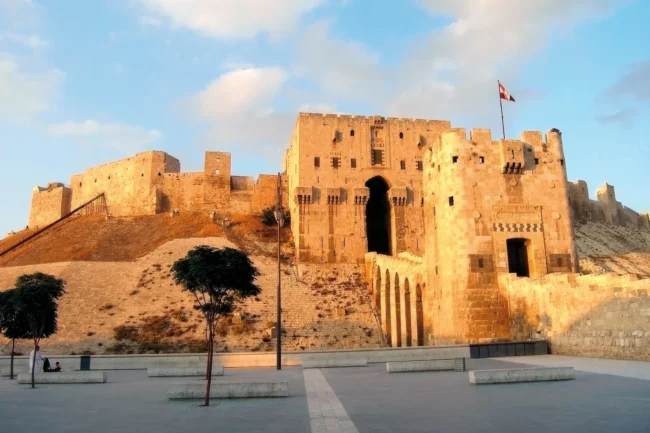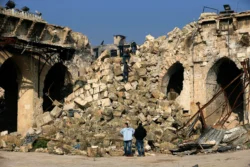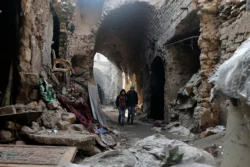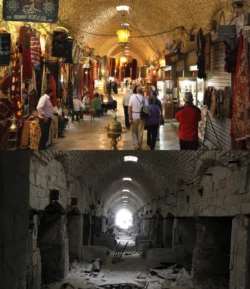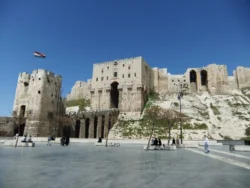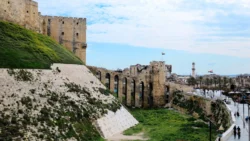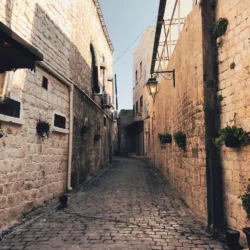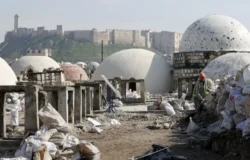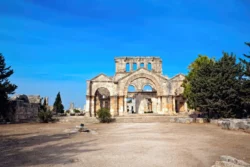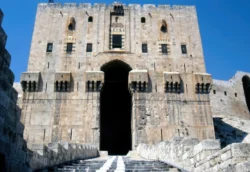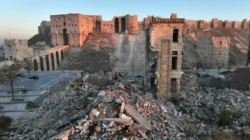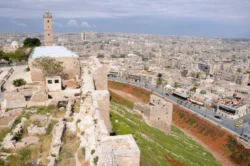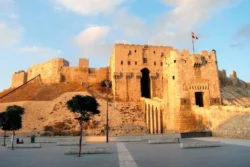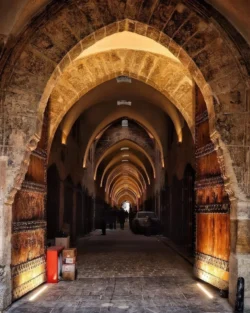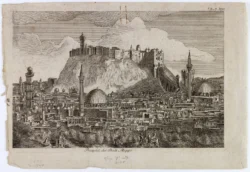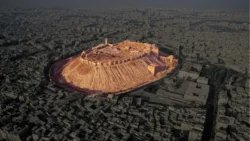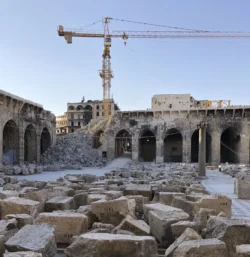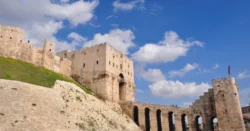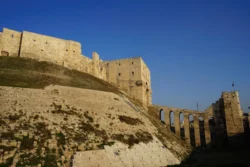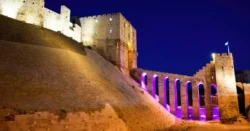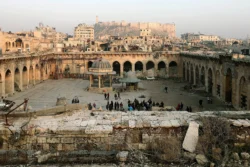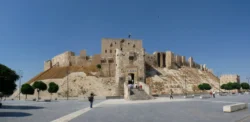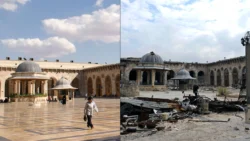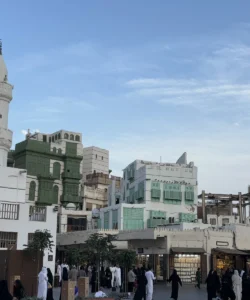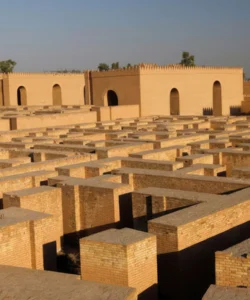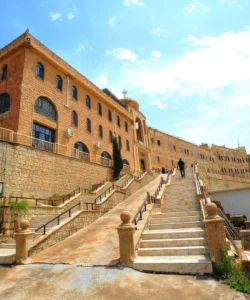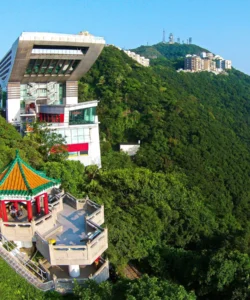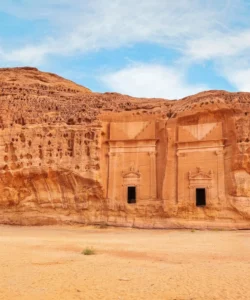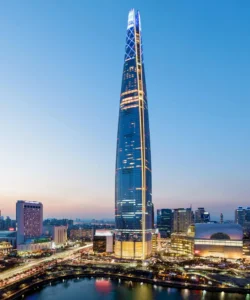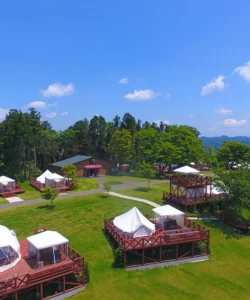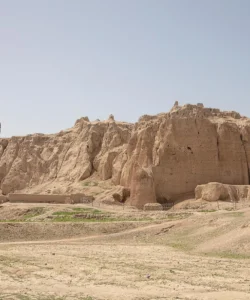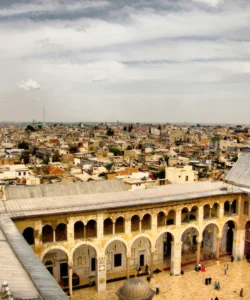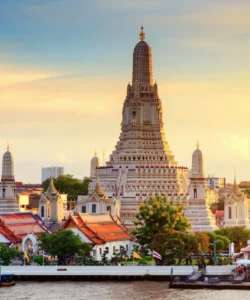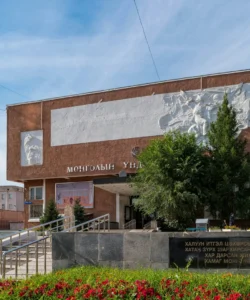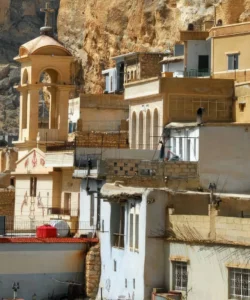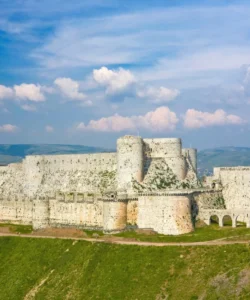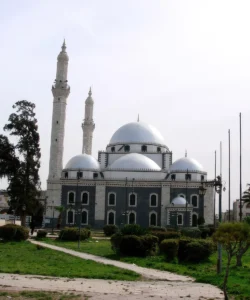The Ancient City of Aleppo, known in Arabic as Halab, is a UNESCO World Heritage Site in northern Syria. It is one of the world’s oldest continuously inhabited cities, a historical crossroads of trade routes, and a testament to centuries of diverse civilizations that have left their architectural and cultural mark.
Listen to an introduction about Ancient City of Aleppo
Name and Address
Name: Ancient City of Aleppo (Arabic: مدينة حلب القديمة, Madīnat Ḥalab al-Qadīma)
Address: The ancient city is the historic center of modern Aleppo, the capital of the Aleppo Governorate in northwestern Syria.
How to Get There
A note on travel: Due to the ongoing civil war and a volatile security situation, most governments advise against all travel to Syria. It is crucial to consult up-to-date travel advisories from your home country before considering any travel to the region.
Assuming safe travel is possible, here is how you would typically get there:
- By Air: The main entry point would be Aleppo International Airport (ALP), which is located southeast of the city center. From there, you would need to arrange transportation to the Old City.
- By Road: The Ancient City is located at the heart of modern Aleppo. Local taxis and private drivers are the main way to get around the city. The Old City itself is best explored on foot to navigate its narrow alleyways and souks.
Landscape and Architecture
The urban landscape of Ancient Aleppo reflects its long history as a major trade center, with its design shaped by various civilizations.
- The Citadel: The most prominent landmark is the Citadel of Aleppo, a colossal medieval fortified palace that sits on a large, partly man-made hill in the city’s center. Its imposing walls and monumental gatehouse are a striking example of Ayyubid military architecture.
- Covered Souks: Aleppo was famous for its extensive network of covered souks (Al-Madina Souq), which were some of the largest and best-preserved in the Middle East. These markets, with their high vaulted ceilings and narrow streets, were the economic heart of the city.
- Religious Sites: The city contains numerous historic mosques, madrasas, and churches, including the Great Mosque of Aleppo, which was built in the 8th century on the site of a former Byzantine cathedral.
- Urban Plan: While much of the city’s visible heritage is from the medieval and Ottoman periods, the underlying urban fabric and street pattern still show traces of its Hellenistic and Roman planning.
What Makes It Famous
The Ancient City of Aleppo is famous for a unique combination of historical depth, economic power, and cultural resilience.
- Ancient Trade Hub: For centuries, Aleppo was a major crossroads on the Silk Road, linking the Mediterranean to the East. Its strategic location made it a thriving commercial powerhouse and a melting pot of cultures.
- One of the Oldest Cities: Like Damascus, Aleppo is considered one of the oldest continuously inhabited cities in the world, with its history dating back over 4,000 years.
- The Citadel: The Citadel of Aleppo is an iconic symbol of the city’s power and resilience, recognized as one of the largest and oldest fortified castles in the world.
- Cultural and Culinary Center: Aleppo has a rich heritage of traditional Arab poetry, music, cuisine, and handicrafts, which flourished due to its role as a cultural hub.
Differences from Some Other Wonders (e.g., The Ancient City of Damascus)
While both Aleppo and Damascus are among the world’s oldest continuously inhabited cities and share a layered history of civilizations, they have distinct characteristics.
- Economic vs. Political Focus: Historically, Aleppo’s fame was driven by its role as a powerful economic and trade hub. Damascus, on the other hand, was more renowned as a political and administrative capital for various empires, particularly during the Umayyad period.
- Urban Morphology: Due to its history of rebuilding after major earthquakes, Aleppo’s historical center is more of a dense, fortified collection of quarters surrounding its central Citadel. Damascus’s Old City is more distinctly defined by its Roman-era grid and central thoroughfare.
- Modernity and Geography: Damascus sits in a fertile oasis, which contributes to its suburban sprawl. Aleppo is situated on a plateau, with a more abrupt transition from urban to rural areas.
- Impact of Conflict: While both cities have been affected by the civil war, the physical destruction to the historical core of Aleppo, including its famous souks and parts of the Citadel, was more extensive than in Damascus.
Ancient City of Aleppo Photos:
